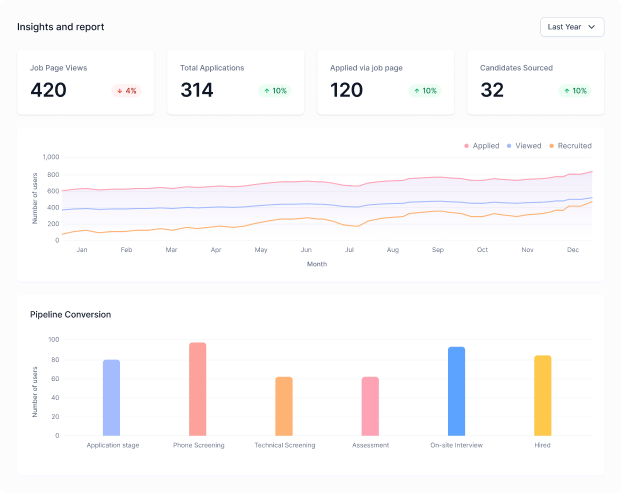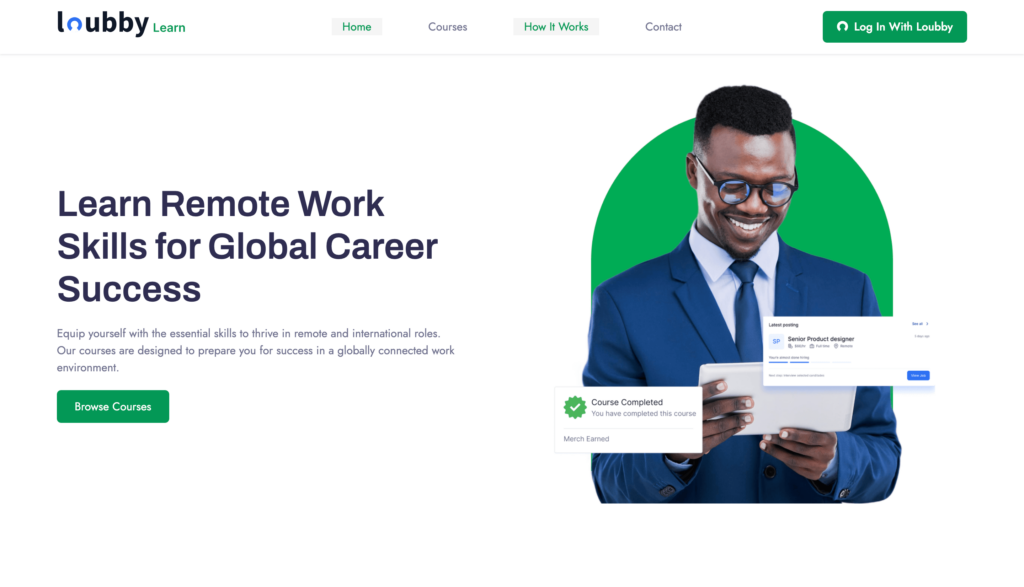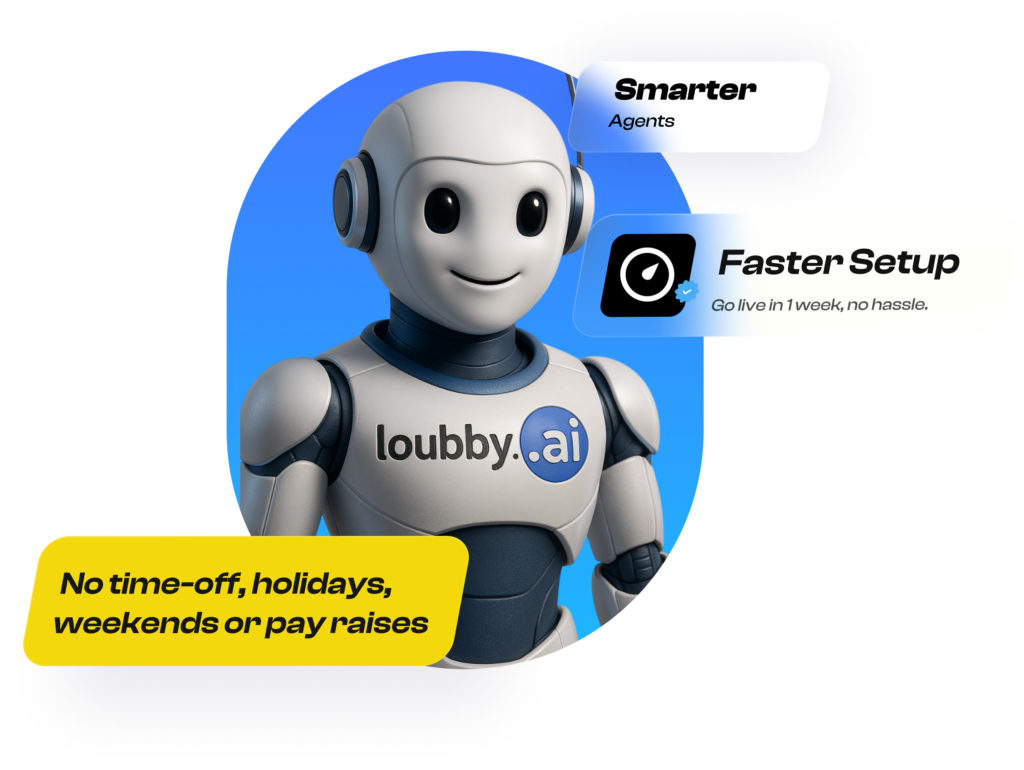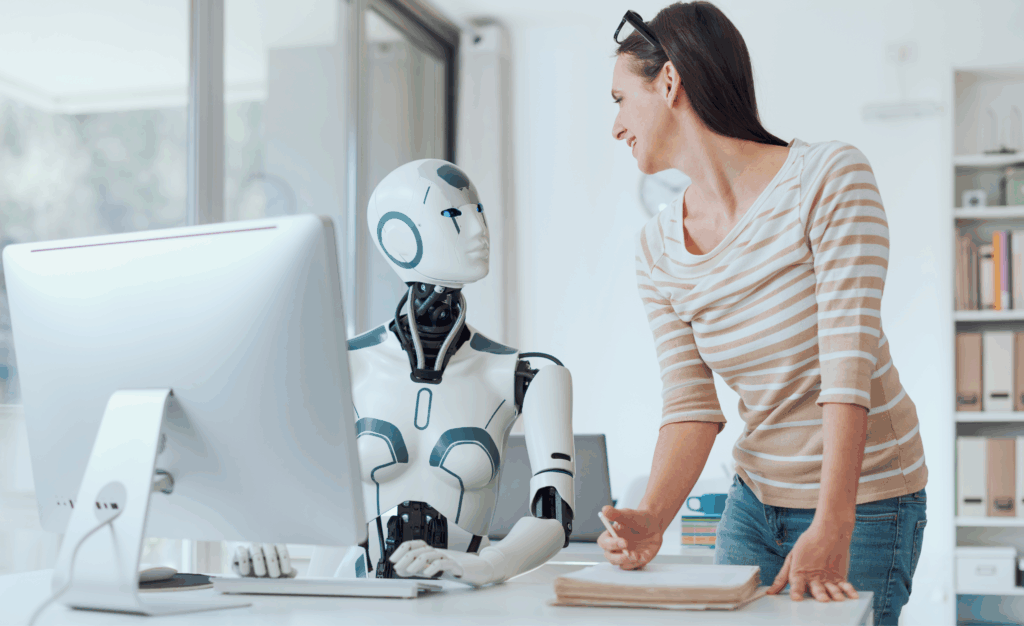AI recruitment is changing how fast you can hire, but speed isn’t your only problem. Every day a position stays open costs you money and momentum. The best candidates are off the market in 10 days, while your hiring process takes 44 days on average.
So you think about using AI to speed things up. Then another thought hits you, what if automation makes your hiring feel cold and robotic? What if great candidates walk away because they feel like they’re talking to a machine instead of a person
This isn’t a choice between speed and humanity. You can have both. When you use AI recruitment the right way, it actually creates more time for genuine human connection. The trick is knowing where AI helps and where humans need to take over.
Why Traditional Recruitment Wastes Time (And How AI Fixes It)
Your recruiters aren’t slow because they’re lazy. They’re buried in tasks that eat up their day without moving candidates forward.
According to research from SelectSoftware Reviews, recruiters spend about 35% of their time just scheduling interviews. That’s more than a third of their week playing email ping-pong, trying to find a time that works for everyone.
Add in resume screening, sending status updates, and chasing down feedback from hiring managers, and you see the pattern. Most of a recruiter’s day goes to administrative work, not actual recruiting. This is why AI recruitment tools have become necessary rather than optional.
Here’s what this looks like in practice. A recruiter gets 200 applications for one role. They spend hours reading resumes, trying to spot who might be qualified. By the time they reach out to the top candidates, those people have already interviewed elsewhere. Some have accepted other offers.
The manual process creates a bottleneck. While your team handles paperwork, candidates move on. You’re not just slow, you’re losing people because of that speed.
How AI Recruitment Actually Creates More Human Connection
Most people think AI recruitment means less personal interaction. The opposite is true when you implement it correctly.
AI Automates the Repetitive, Humans Handle the Relational
AI is built for repetitive tasks. It can parse hundreds of resumes in seconds, pulling out relevant skills and experience. Schedule coordination across multiple time zones? Done without breaking a sweat. Confirmation emails and status updates go out automatically.
This frees up your recruiters to do what humans do best: build relationships. They can spend time having real conversations with candidates. They can assess cultural fit, understand motivations, and answer questions that matter.
Data from HireBee shows that companies using recruitment automation report 50% more time spent engaging with qualified candidates. That’s not less human touch. That’s more of it, focused where it counts.
When your recruiters aren’t stuck in their inbox all day, they can pick up the phone. They can have video calls. They can actually get to know the people they’re trying to hire.
Automated Responses Feel More Personal When They’re Faster
Candidates hate silence. According to Cronofy’s research on recruitment mistakes, 67% of candidates cite poor communication as their biggest frustration during the hiring process.
Think about it from their side. They apply and hear nothing for two weeks. Doubts creep in did their resume even make it through? Eventually, they feel completely ignored.” Eventually, they assume you’re not interested and move on.
AI fixes this by responding instantly. The moment someone applies, they get a confirmation. They know what happens next. They see a timeline. These automated touchpoints keep candidates engaged while your team reviews their information.
The key is pairing automated updates with personal interaction at critical moments. After the initial automated acknowledgment, a recruiter reaches out personally within 48 hours. That combination quick automated response plus timely human contact, creates the best candidate experience.
AI-Powered Interviews Are Fairer and More Consistent
One concern about AI recruitment is bias. But structured interviews powered by AI can actually reduce bias significantly.
Research highlighted by the World Economic Forum found that AI-led interviews can reduce hiring bias by 50% while improving success rates. A Stanford study referenced in the same article showed AI interviews had a 53% success rate compared to just 32% for resume-only screening.
Here’s why this matters. Traditional interviews vary wildly depending on who’s conducting them. One interviewer asks about past projects. Another focuses on hypothetical scenarios. A third spends the whole time chatting about hobbies. You end up with inconsistent data that makes it hard to compare candidates fairly.
AI interviews like those conducted by Loubby AI’s Dara ask every candidate the same questions in the same way. They analyze responses based on clear criteria. This creates consistency while freeing human interviewers to focus on fit and potential during later rounds.
The AI doesn’t make the final decision. It provides data that helps humans make better decisions. That’s the balance you’re looking for.
Four Ways to Implement AI Recruitment Without Losing Your Touch
You don’t need to automate everything at once. Start with these four approaches that maintain the human elements candidates care about.
1. Automate Communication, Personalize Content
Use AI to trigger messages at the right time, but make sure those messages sound like they come from a real person. Include your recruiter’s name and contact information. Write in a natural, conversational tone.
Compare these two messages:
“Thank you for your application. We will review it and contact you if you are selected for an interview.”
vs.
“Thanks for applying to join our engineering team. I’m Sarah, and I’ll be reviewing applications this week. You should hear from me by Friday with the next steps. If you have questions in the meantime, just reply to this email or call me at proovided number
Both can be automated. The second one feels personal because it tells the candidate who’s handling their application and when they’ll hear back. It gives them a way to reach a real person if needed.
This approach helps you avoid common hiring mistakes that cost companies top talent.
2. Let AI Screen Candidates, But Humans Make Final Decisions
AI is excellent at identifying who meets the basic requirements. It can scan for specific skills, years of experience, or relevant background faster than any human.
But here’s where humans need to take over. Two candidates might both have five years of Python experience, but one solved complex problems at scale while the other maintained legacy code. The resume might not capture that difference. A conversation will.
Use AI-powered assessments to test skills objectively before interviews. These tools let you check whether someone can actually do the work, not just talk about it. This gives you confidence in who you’re interviewing while ensuring qualified people don’t slip through because their resume didn’t use the right keywords. If you want to learn the practical steps, see how to automate assessments for faster hiring.
Then bring in human judgment for the final decision. Let your team assess motivation, growth potential, and whether someone will thrive in your environment. These are things AI can inform but shouldn’t decide.
3. Build Human Touchpoints Into Your Automated Hiring Workflow
Map out your hiring process and identify moments where personal interaction matters most. These are usually:
- Right after someone applies (automated confirmation + personal outreach within 48 hours)
- Before the first interview (recruiter call to prep candidate and answer questions)
- After each interview round (personal feedback call, not just an automated email)
- When making an offer (live conversation, not a form letter)
Research from Universum shows that 66% of candidates who accept offers cite positive experience during the process as a key factor. Those positive experiences come from personal interactions at the right moments.
You can automate everything between these touchpoints. Schedule confirmations, assessment invitations, and status updates can all run automatically. But when it’s time to actually talk to a candidate about something important, pick up the phone.
4. Use AI Interviews for Efficiency, Human Interviews for Connection
AI interviews work well for initial screening. They ensure consistency, save time, and give you structured data on every candidate.
Loubby AI’s Dara improves hiring speed and quality by conducting structured initial interviews that analyze responses in real time. It scores candidates on relevant criteria and provides actionable feedback to hiring managers. This means when your team sits down with a candidate, they already know the person can do the job. The human interview can focus on deeper questions about fit, motivation, and potential.
Keep your final rounds human-led. This is where you assess whether someone will thrive on your team, contribute to your culture, and grow with your company. No AI can make that judgment for you.
The data from AI interviews helps your recruiters ask better questions. Instead of wasting time confirming basic competencies, they can explore how someone thinks, what drives them, and where they want to go in their career.
What Candidates Actually Want (And Don’t Want) From AI Recruitment
Understanding candidate expectations helps you balance automation with a personal touch in ways that matter.
Candidates want quick acknowledgment when they apply. They want clear timelines so they know what to expect. Transparency matters too, especially about how you’ll evaluate them and whether AI is part of the process. Most importantly, candidates need a chance to showcase skills beyond keywords on a resume.”Many qualified people don’t fit traditional patterns; they’re bootcamp graduates, self-taught developers, or professionals from non-traditional backgrounds. Skill-based hiring approaches give these candidates a fair shot by testing what they can do rather than just where they studied.
What candidates don’t want is to feel like a number in a system. They don’t want black-box decisions where they never understand why they got rejected. They don’t want to go through multiple rounds without ever talking to a real person.
According to DemandSage’s AI recruitment statistics, about 40% of candidates feel uneasy about AI involvement in hiring decisions. But 82% appreciate faster application processing. The key is being transparent about how you use AI and ensuring candidates always have access to a human when they need one.
Common AI Recruitment Mistakes That Make Hiring Feel Cold
Even with good intentions, companies make mistakes that turn candidates off. Here are the biggest ones to avoid.
Over-relying on keyword matching excludes qualified people who describe their experience differently. Someone might have the exact skills you need, but phrase them in a way your AI doesn’t recognize. Always have humans review AI decisions before rejecting candidates. Understanding the balance between AI and human recruiters helps you avoid this trap.
Ghosting candidates after AI screening is worse than no automation at all. If your system rejects someone, tell them. A simple “we’ve decided to move forward with other candidates” is better than silence.
Having no human interaction until the final round makes candidates feel like they’re going through a machine. Build in personal touchpoints early. Even a five-minute phone call after the initial screening makes a difference.
Not explaining how AI fits into your process creates suspicion. Be upfront. Tell candidates you use AI to screen applications and conduct initial interviews. Explain that humans make all final decisions. Most people are fine with AI when they understand its role.
Using AI as an excuse for poor communication doesn’t work. Automation should improve communication, not replace it. If candidates can’t reach a real person when they have questions, your system needs work.
The Future Is Human-AI Collaboration in Hiring
The trend is clear. Data from HireBee projects that 70% of organizations will use AI in their hiring process by the end of 2025. This isn’t coming, it’s here.
But the companies winning the talent war aren’t choosing between AI and human touch. They’re combining both.”AI handles volume so humans can handle nuance. The technology screens for qualifications so recruiters can assess for fit. Automated systems maintain consistency so hiring managers can focus on potential.”
“Companies that balance both see real results. They report 35% improvement in hire quality because they’re assessing candidates more thoroughly. Roles get filled faster because bottlenecks disappear. Better yet, candidates experience more meaningful interactions with timely responses and genuine conversations.”
Understanding the benefits of AI in recruitment helps you maximize ROI while maintaining quality. At Loubby AI, this is exactly how the platform works. Jabari (AI Recruiter) automates sourcing, job postings, and interview scheduling. Dara (AI Interviewer) conducts structured initial interviews with real-time analysis. But humans stay in control of every decision that matters.
The AI gives you the time and information you need to make better choices. It doesn’t make those choices for you.
Start Small: Scale Your AI Recruitment Strategy Smart
You don’t need to overhaul your entire hiring process tomorrow. Pick one area where AI can help right now.
If you’re drowning in applications, start with automated screening and AI-powered assessments. This immediately cuts the time spent sorting through resumes and gives you better data on who’s qualified.
If scheduling is your biggest headache, automate that first. Let AI coordinate calendars while you focus on preparing for and conducting interviews.
If candidate communication is inconsistent, set up automated updates at key moments. Make sure candidates always know where they stand in your process.
As you get comfortable with one automated workflow, add another. Onboarding automation is often the next logical step after recruitment. Over time, you’ll build a system that moves fast without feeling impersonal.
The goal isn’t maximum automation. It’s better hiring. AI recruitment reduces time-to-hire by taking care of tasks that don’t need human judgment. This creates space for genuine connection with the people you want to hire.
When you get this balance right, you hire faster, make better decisions, and create experiences that make top candidates want to work for you.
Ready to see how AI-powered hiring maintains personal connection while cutting time-to-hire? Book a demo with Loubby AI to see Jabari and Dara in action. You can also explore our pricing options to find a plan that fits your needs.







